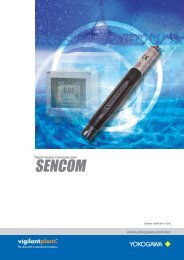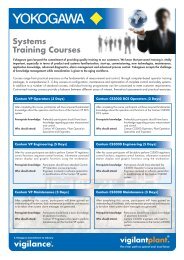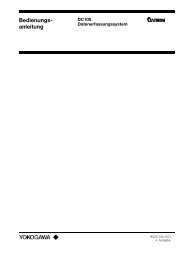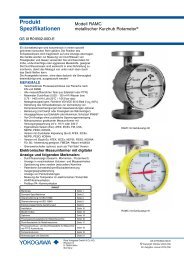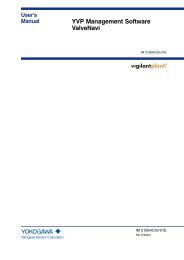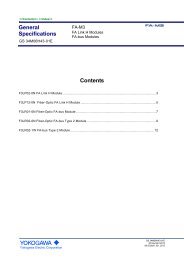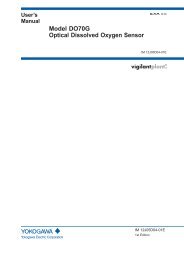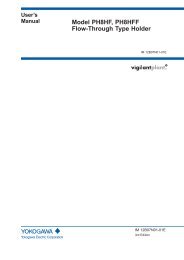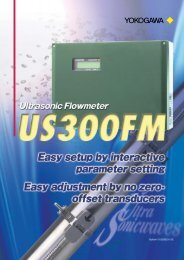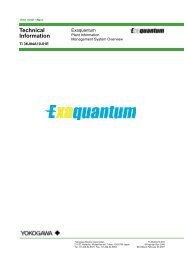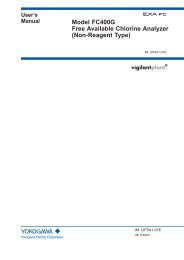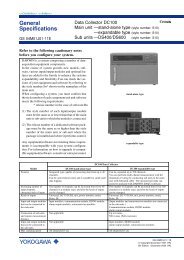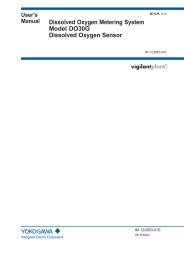User's Manual for CM6G - Yokogawa
User's Manual for CM6G - Yokogawa
User's Manual for CM6G - Yokogawa
You also want an ePaper? Increase the reach of your titles
YUMPU automatically turns print PDFs into web optimized ePapers that Google loves.
2< Principle of Measurement>When using orifice and take out Fa, Fg as a differential pressure of be<strong>for</strong>e and after orifice, Fa and Fgare represented by the following <strong>for</strong>mula:∆ Pa∆ PgFa = Ka Fg = Kg(1.3)ρ aρ gwhere: ∆Pa, ∆Pg:ρa, ρg:ka, kg:Air, gas differential pressure between be<strong>for</strong>e and after orificeDensity of the air and the gasOrifice constant figure of the air and the gas(Orifice coefficient orifice sectional area)If insert <strong>for</strong>mula (1.3) into <strong>for</strong>mula (1.2), ∆θ is represented by the following <strong>for</strong>mula:1∆ Pg∆θ = C.K. •(1.4)ρg∆ Pa(C =1Cpa (1+g)Kg• • ρa )KaAccording to <strong>for</strong>mula (1.4), if ∆Pa, ∆Pg are constant, temperature difference ∆θ is in proportion to WI(k/ √ρg ) or calorific value (K). Thus we can measure continuously WI after ∆θ measurement, and thecalorific valve after the measurement and calculation of the density.IM 11R02A01-02E



